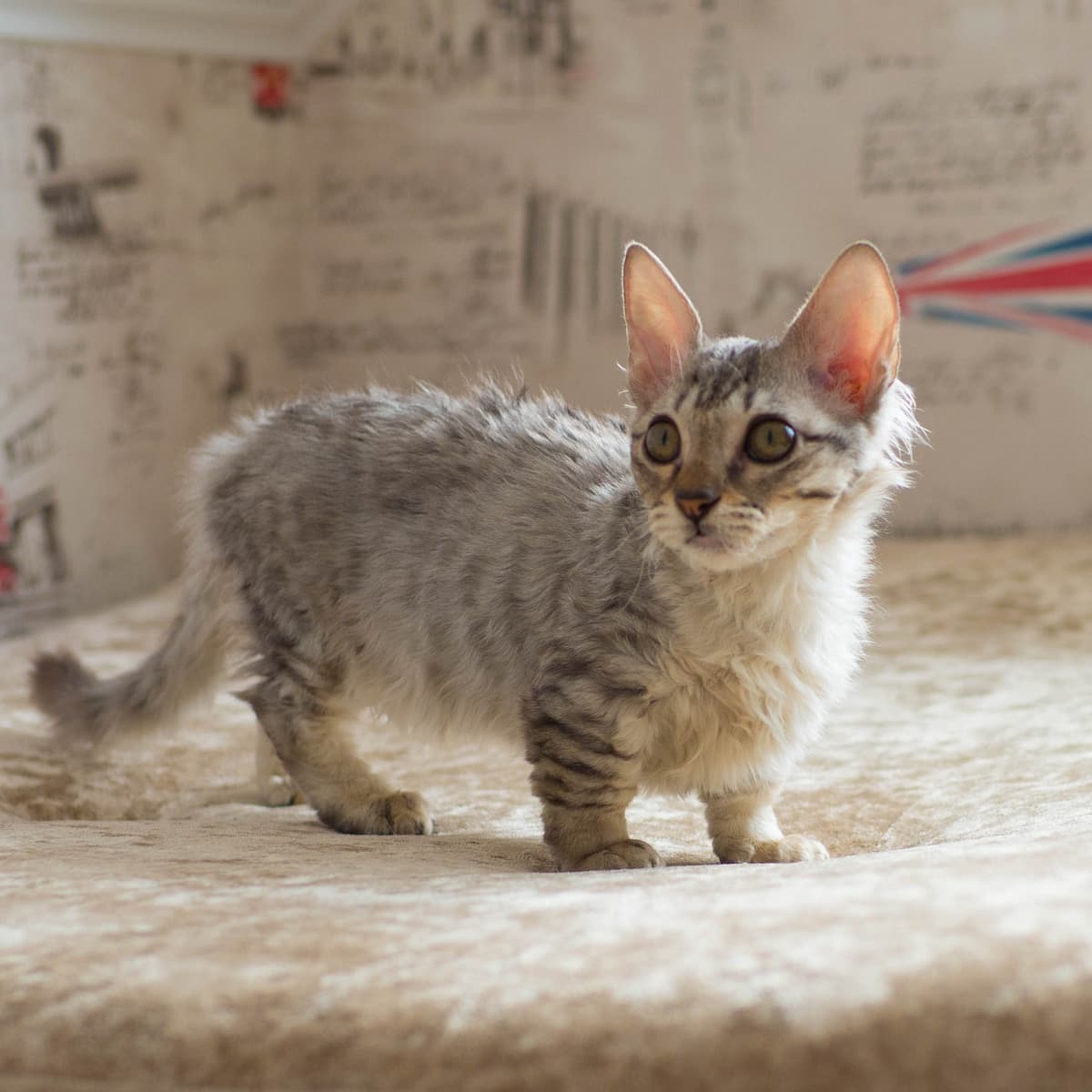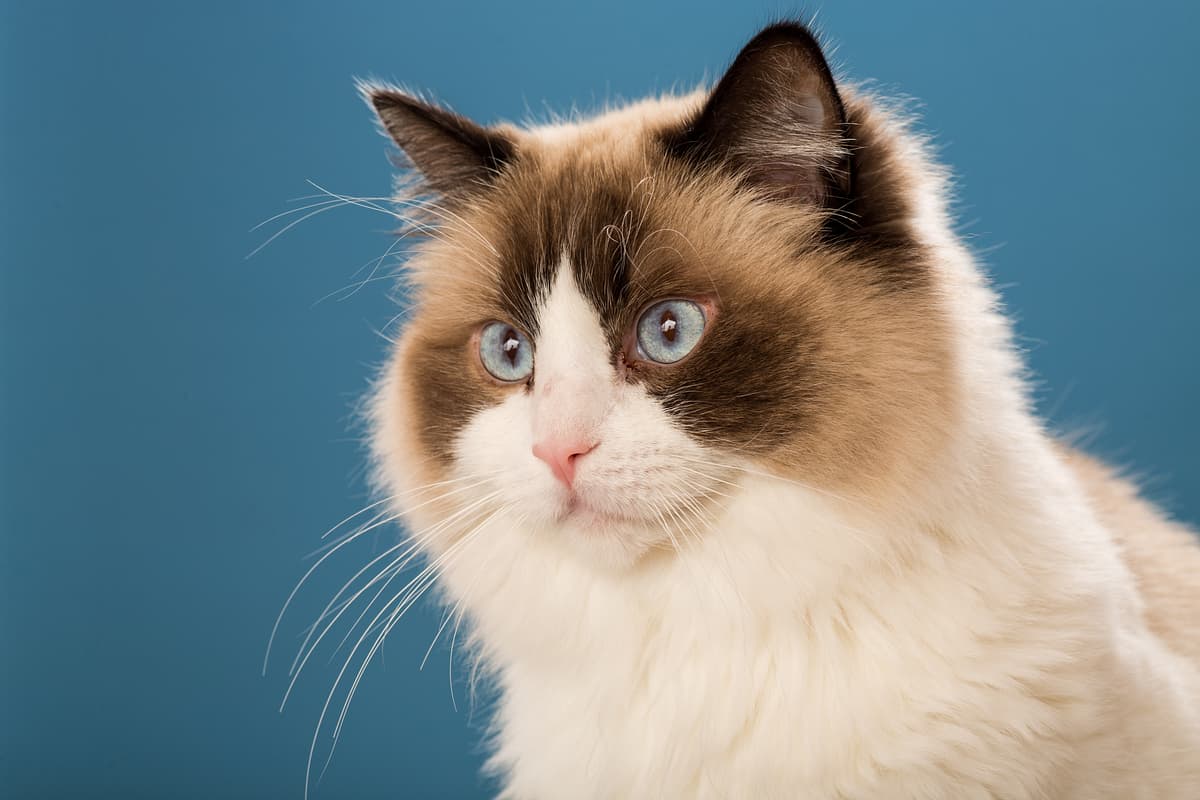Munchkin vs Ragdoll
Discover the differences between Munchkin and Ragdoll to make the best choice for your situation.
Try different breeds

Munchkin
Short legs and playful spirit make this breed endlessly entertaining. Affectionate and outgoing, Munchkins thrive as charming companions in any loving home.

Ragdoll
Gentle, affectionate, and known for their striking blue eyes, Ragdolls thrive as loving companions. Their relaxed nature makes them perfect for families and those seeking a calm feline friend.
Quick comparison
Small
2–4 kg
Shorthaired, plush
12–15 years
2–3.5 kg
Moderately active
Large
6–9 kg
Longhaired, silky
12–16 years
4–6 kg
Low activity needs
Personality & behavior
Compare the personality traits and behavioral characteristics of both breeds.
Munchkin
Enjoys human company and seeks social interaction
Learns routines and basic tricks fairly quickly
Active indoors, enjoys regular bursts of activity
Frequently engages in games and interactive play
Adjusts well to new environments and changes
Ragdoll
Affectionate and gentle with people and children
Learns routines and simple tricks quickly
Prefers lounging over frequent active play
Enjoys interactive toys in short sessions
Adjusts well to new environments and changes
Care needs
Exercise, grooming, and daily care requirements
Munchkin
Lordosis, pectus excavatum
Ragdoll
Hypertrophic cardiomyopathy, bladder stones
Suitability
How well each breed fits different living situations and families
Munchkin
Great choice
Easygoing temperament and adaptability make them manageable for first-time cat owners
Highly suitable
Small size and moderate activity level fit well in apartment settings
Moderately suitable
Enjoy play but may tire quickly due to short legs and lower stamina
Very friendly
Generally gentle and tolerant with respectful young children
Good fit
Typically sociable with other pets if introduced properly
Not ideal
Dislike being alone for extended periods and may become lonely or stressed
Ragdoll
Highly suitable
Gentle temperament and easygoing nature make Ragdolls easy for beginners to manage
Perfect fit
Ragdolls adapt well to smaller spaces and are generally quiet and calm indoors
Not ideal
They are not especially energetic and may not match fast-paced or highly active lifestyles
Great choice
Their tolerant and patient nature makes them safe companions for families with young children
Very friendly
Ragdolls are sociable and typically get along well with other pets in the household
Prone to anxiety
They dislike being left alone for long periods and may develop stress or behavioral issues
Breed strengths
What each breed excels at and their best qualities
Munchkin
- Playful and energetic with interactive toys
- Social and enjoys human companionship
- Adaptable to apartment or indoor living
- Generally friendly with other pets
- Low grooming requirements due to short coat
Ragdoll
- Gentle and calm temperament
- Tolerant of handling and children
- Typically gets along with other pets
- Low tendency for aggression or scratching
- Affectionate and enjoys human company
Challenges & considerations
Potential challenges and considerations for each breed
Munchkin
- Prone to spinal or joint issues
- Limited jumping ability due to short legs
- May struggle with high surfaces
- Can be prone to obesity if inactive
- Some concerns about breeding ethics
Ragdoll
- Prone to certain genetic heart conditions
- Requires regular grooming for long coat
- May develop obesity without exercise
- Slow to mature, both physically and emotionally
- Not suited for unsupervised outdoor life
Ready to choose your perfect breed?
Learn more about each breed or compare other breeds to find the perfect match for your lifestyle.
Discover more helpful tools
Make use of our other free tools to get the most out of your pet experience
